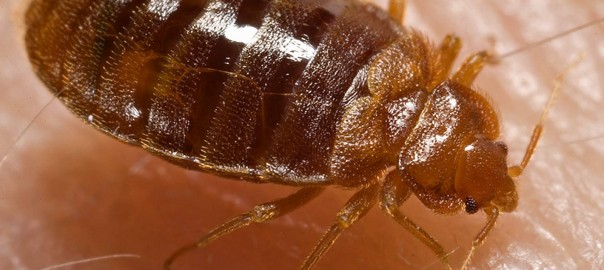Bed bugs are one of the most common pests in the UK, but any signs of infestation are often either ignored or simply unknown. We thought it would be useful to know the 5 main signs that could indicate a bed bug infestation, and how they can be treated effectively.
- Bites – Are you regularly finding yourself covered with small, red marks? If they swell or itch when scratched, and resemble a small row (as opposed to bites in numerous places), it is likely you have a bed bug infestation, as bed bugs feed on sedentary humans.
- Checking your mattress and headboard – It is important to check your mattress thoroughly for signs of both the small, black bugs and their eggs. Bed bugs often leave behind very small, black traces in which can be seen on both your headboard and bed frame in addition to the sides of your mattress.
- Sweet odours. When there is a colony of bed bugs, they will tend to emit a sickly sweet almond smell, chemicals which help the bed bugs to communicate. It is important to note however, that not everyone will be able to notice the smell.
- Eggs and exoskeletons. Bed bugs have an outer shell that they shed and leave behind. If you see shell-like remains on the mattress or underneath cushions for example, this is a sure sign you may have bed bugs. There can also be eggs in which female bed bugs lay in small crevices. These can appear to be white and oval shaped, and can be difficult to spot considering bed bugs measure at approximately 5-7 millimetres.
- Black marks around your home. If you have noticed the appearance of black marks and dirt on skirting boards, flooring, walls, and around the seams of mattresses and headboards, this is a strong sign that you may have a bed bug infestation that needs to be treated by a pest control engineer.
How can bed bugs be treated?
It is advised that bed bugs are to be treated by a qualified pest controller from using a water-based insecticide spray. This is because vacuuming alone will not remove the pests. Ideally, a bed bug infestation should be treated in the morning. This is because it is more likely that the insecticide will settle, as well as minimising risk of inhalation of the spray. Consequently, it is important that the treated premises is vacated for at least four hours after the treatment. Bed bugs can contaminate an entire property so it is very important that as much of the area as possible is treated.
However, it should be noted that:
- The room(s) will need to be cleared of any clutter, this includes furniture.
- Soft furnishings should be removed and washed at the highest possible temperature, to ensure that there is no longer an infestation present.
- Pregnant women, babies or young children or those with breathing difficulties such as asthma, will be at a greater risk from the treatment (the pest controller will advise these customers on how long they should vacate the premises for).
If you believe you may be suffering from a bed bug infestation, always be sure to use a reputable pest controller to be rid of your pest problem in no time.





